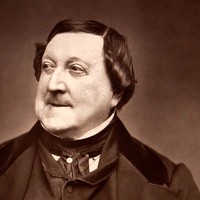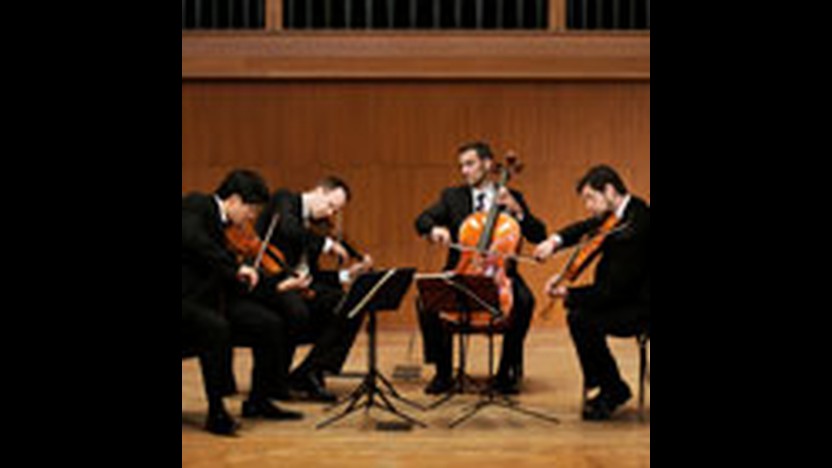Details
 Watch Video
Watch Video
Ludwig van Beethoven
Symphony No. 1
Ludwig van Beethoven, born into a musical family in the German city of Bonn, left his hometown for Vienna in November of 1792, at the age of 21. The aim of the trip, as his patron Count Ferdinand von Waldstein famously put it, was for the young composer to “receive Mozart’s spirit from Haydn’s hands.” The Elector of Bonn had released Beethoven from his performing and composing duties, with the expectation that he would study for a time with Haydn and then return to serve the court that had employed three generations of the Beethoven family.
Beethoven did study with Haydn, working mainly on counterpoint, but their short-lived tutelage ended when Haydn accepted an offer to spend a season in London, at which point he passed Beethoven off to another teacher. Beethoven’s period of study with Haydn had only a modest impact on his composing, but his chance to test the waters in the Vienna proved life-altering. Filling a void left by Mozart’s death in 1791, Beethoven was able to establish himself as the city’s premier keyboard virtuoso and improviser. He cut his ties with Bonn and pieced together enough work to embark on a freelance career.
Early on, Beethoven shied away from Haydn’s two signature genres: the symphony and the string quartet. Beethoven finally wrote his first quartets, a set of six grouped as Opus 18, between 1798 and 1800. As for symphonies, Beethoven made an attempt in 1795-96 (after hearing Haydn’s London Symphonies), but he did not complete one until 1800. He debuted the work on April 2 on his first benefit concert at the Burgtheater, the same venue where Mozart had presented his own popular concert series.
Beethoven’s First Symphony honors the Viennese tradition of Haydn and Mozart, and yet it also contains a germ of independence. The most striking departure comes in the very first sonority, an unstable chord that resolves away from the home key and only cycles back to the proper tonal center of C major after a drawn-out, tantalizing introduction. When the main theme enters in the new Allegro con brio tempo, it plays with a figure that repeatedly confirms the proper home key, as if to brush away the initial uncertainty.
In a sign of the interconnectivity that distinguishes all of Beethoven’s symphonies, the second movement starts with the same ascending interval (a perfect fourth) that was so central in the first movement. A distinguishing characteristic of this slow movement is its rich and independent writing for winds, with a scoring that includes trumpets and timpani.
The third movement, though labeled a minuet, is closer in spirit to the wild scherzos of the later symphonies. The contrasting trio section showcases Beethoven’s keen sense of humor, with scampering runs in the strings popping up between chorale phrases in the woodwinds. The finale brings this fledgling symphony full circle with another slow introduction. The violins test an ascending scale, adding a note at a time; when they reach the top of the octave, they launch a bright and hearty valediction.
— © Aaron Grad
Aaron Grad ©2017
Kevin Puts
How Wild the Sea
It seems I am always making memorials, or trying to process tragedy through my writing. Falling Dream (2001) is a musical fantasy on the devastating film I saw of a couple leaping hand in hand from one of the burning towers of 9/11; Clarinet Concerto (2008) was written after seeing a documentary on mourning families at the grave sites of the recently fallen in Iraq and Afghanistan.
In the case of How Wild the Sea, I was compelled by news footage of an elderly Japanese man sitting helpless on the rooftop of his house as it is carried away by the powerful tsunami tide of 2011. His wife had been swept under, minutes before. I was reminded of the earthquake of 1995 that destroyed much of Kobe, a city I visited in 1997 for the Japanese premiere of my Marimba Concerto. The efficiency and speed at which the city had been rebuilt was remarkable.
The solo string quartet opens the work with a four-voiced texture of rising arpeggios and falling scales. The orchestra quickly washes over the quartet like a sonic wave, from which the quartet emerges, only to be engulfed once again. For the most part, the quartet acts as a protagonist in this movement, the orchestra as the force of nature.
The second movement (Saisei = “rebirth” in Japanese) recalls the toccata-like final section of my trio And Legions Will Rise, a work premiered in Kobe in 2003. For me, this music has always evoked resiliency, courage, the summoning of fortitude. The oppositional dichotomy between solo quartet and orchestra has dissolved in this final movement, and the two often cooperate in melodic and rhythmic counterpoint, spinning forth with neo-Baroque energy.
How Wild the Sea is dedicated in warm friendship to the Miró Quartet. It was commissioned by Texas Performing Arts at The University of Texas, the St. Paul Chamber Orchestra Society, City Music Cleveland Chamber Orchestra, ProMusica Chamber Orchestra of Columbus and the Naples Philharmonic. Additional support was provided to Texas Performing Arts by The Andrew W. Mellon Foundation. The premier took place on December 4, 2013 with the Miró Quartet and The University of Texas Symphony Orchestra led by Gerhardt Zimmerman.
Kevin Puts ©2014
 Listen to Audio
Listen to Audio
John Luther Adams
Become River (World Premiere, SPCO Commission)
Steven Schick and I were having dinner together. I was just beginning work on a large-scale piece for the Seattle Symphony. So when Steve asked me if I might be interested in composing a new piece for The Saint Paul Chamber Orchestra, I must have hesitated.
Deftly, Steve asked me to tell him a little about the Seattle piece.
I went on at length about the music I’d begun to imagine, finally concluding:
“It’s called Become Ocean. The title comes from a poem that John Cage wrote in honor of Lou Harrison.”
Cage observed that the breadth and variety of Harrison’s music make it “resemble a river in delta.” He concluded that:
LiStening to it
we becOme
oceaN.
“So you’re already composing a symphonic ocean,” Steve said. “Maybe for a smaller orchestra you could go ahead and compose that river in delta.”
Steve had me, and I knew it. Within a week I’d begun work on Become River.
From a single high descending line, this music gradually expands into a delta of melodic streams flowing toward the depths.
I now imagine this river and its related ocean, as part of a larger series of pieces encompassing desert, mountain, tundra, and perhaps other landscapes and waterscapes.
John Luther Adams ©2013
 Listen to Audio
Listen to Audio
Gioachino Rossini
Overture to The Barber of Seville
Gioachino Rossini was the greatest opera composer of his generation. From his first comic farce, written at age 18, to his crowning work for the stage, William Tell, he dashed off an astounding 39 operas in 19 years. Then, at the height of his fame and creative powers, Rossini withdrew almost entirely from composing. He never wrote another opera in his remaining 40 years.
Il signor Bruschino was already the eighth opera created by Rossini, who was just shy of his 21st birthday, and it marked the fourth commission in the span of a year from Venice’s Teatro San Moisè. As with his previous works for Venice, this new one-act opera took the form of a comic farce, featuring a small cast of performers who were as much comedians as singers.
The complete title of this opera hints at the basic outline of the story—Mr. Bruschino, or the Son by Accident. Florville wants to marry his beloved Sophia, but she is already promised to the son of one Mr. Bruschino. Florville pretends to be the younger Mr. Bruschino, but everything goes awry when the real Bruschino senior arrives and finds this other suitor impersonating his son!
The most distinctive sound in this playful overture is the rhythmic tapping of violin bows. (In Rossini’s day they probably tapped the shades of their candle holders, but now metal music stands substitute nicely.) The effect is surprising and whimsical, but the musical logic behind it is quite sturdy, with the rhythms mimicking themes already heard from the orchestra.
Aaron Grad ©2017
About This Program
The SPCO welcomes conductor Steven Schick to the stage for a dynamic program of well-known favorites and innovative premieres. After opening with Beethoven’s First Symphony, the world renowned Miró Quartet joins the orchestra for the regional premiere of a new work from Pulitzer Prize-winning composer Kevin Puts (Silent Night, 2011). The second half of the program will feature the eagerly awaited world premiere of John Luther Adams’ Become River and Rossini’s cherished Overture to The Barber of Seville.
Please note: The concert on Friday morning, April 4 at 10:30am will go on as scheduled. Please use caution when traveling and parking this morning.
COMPOSER CONVERSATION SERIES
Composer John Luther Adams, featured on this program, will join us for a Composer Conversation at Amsterdam Bar and Hall in Saint Paul on Wednesday, April 2 at 7:00pm. Composer Conversation Series events are FREE but reservations are required. More at thespco.org/composer-conversation-series.
Contribute
SPCO concerts are made possible by audience contributions.
Newsletter
For exclusive discounts, behind-the-scenes info, and more:
Sign up for our email club!

